J2ME Loader

| |
| Developer(s) | Nikita Shakarun (nikita36078) |
|---|---|
| Latest version | 1.7.9 [+] |
| Active | Yes |
| Platform(s) | Android |
| Emulates | J2ME Mascot Capsule 3D EZplus アプリ |
| Support ($) | PayPal ЮMoney |
| Programmed in | Java, C |
| License | Apache 2.0 |
| Source code | GitHub |
J2ME Loader is an open-source Java 2 Micro Edition (with support 3D engine "Mascot Capsule V3") and EZplusアプリ compatibility layer[N 1] for Android. This project is a fork of J2meLoader.
Overview[edit]
Released in 2017. JL-Mod merged with J2ME Loader, which also added open-source Mascot Capsule implementation in 2022.
★ System requirements : Android 4.0 +
Screenshots[edit]

|

|

|

|

|

|

|

|

|

|

|

|

|

|

|

|

|

|

|

|

|

|

|

|

|

|

|

|

|

|

|

|

|

|

|
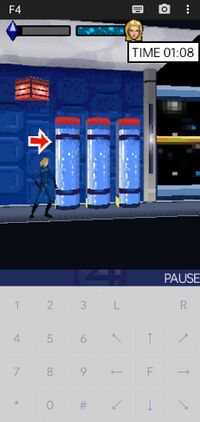
|

|

|

|
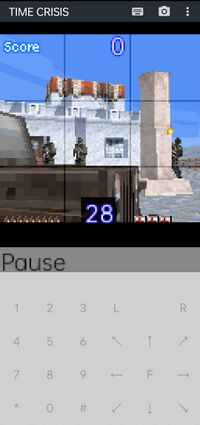
|

|
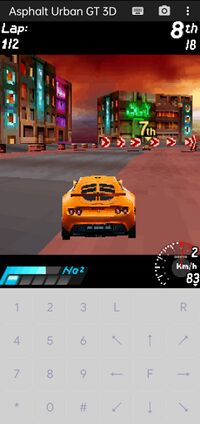
|

|

|

|

|

|

|

|

|

|

|

|

|

|

|

|

|

|

|

|

|

|

|
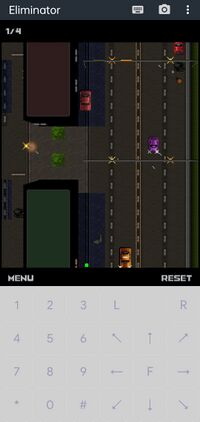
|

|
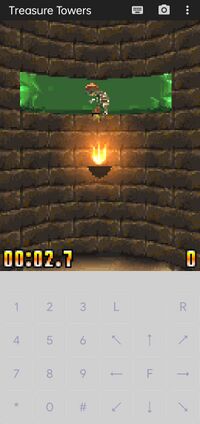
|

|

|
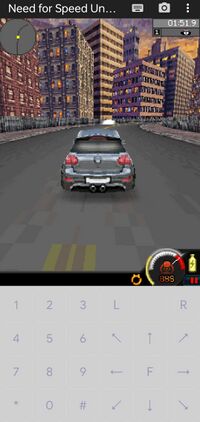
|

|
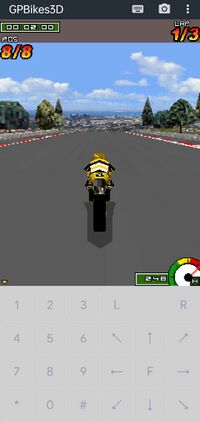
|
Compatibility[edit]
J2ME Loader is high compatible and capable of playing thousands of J2ME games (Runs almost every Nokia games, especially Gameloft games), more than 96.8% of the J2ME library with supports 2D games and also 3D with Mascot Capsule 3D games. Converts .JAR and .KJX files offline using its own resources. Easily launches both 2D & 3D apps. Samsung & Nokia API implemented. Supports different keyboard layouts and customization. It is highly accurate, with the right frame rate for each game, as well as vibration. Has slightly improved performance through hardware acceleration, but games won't run too fast. Runs almost every Nokia game, even ones that don't work with KEmulator or FreeJ2ME
See J2ME Loader compatibility list
Features / Settings[edit]
- Fast emulation
- MIDP 1.0 & 2.0 support
- M3G 1.0 support
- Mascot Capsule 3D support
- High compatibility
- KDDI EZplus アプリ support
- Bluetooth API support
- Touchscreen input support
- Symbian^3 multi touch support
- Supports external virtual keyboards and QWERTY input
- Supported formats .JAR, .JAD and .KJX
- Menu key remapping support
- Buttons customisation support
- Supports different keyboard layouts and customization
- Individual settings for each application.
- Highly accurate, with the right frame rate (FPS limit support) for each game, as well as vibration.
- Hardware acceleration support (but games won't run too fast)
- Screen gravity support
- Screen orientation
- Accelerometer support
- Scaling support
- Immediate processing mode
- → Using shaders (image post-processing filters)
Shaders are GPU microprograms that affect the game in one way or another in order to improve it or replicate the visual features of some on-screen devices, such as displays on portable consoles or old tube TVs. Shaders can significantly alter the game, but also reduce performance. In addition, shaders can have customizable parameters, if there are such an icon for accessing them will be displayed on the far right side and opposite the name of the selected shader.
Supports the same shader format as PPSSPP To use, you need to put them in the shaders folder in the working directory of the emulator, then in the game profile, select the graphics output mode: Hardware acceleration (OpenGL ES) and select the desired shader. Some shaders have settings - when you select one, an icon will appear next to the name, when you click on it, a window with settings will open A small collection of compatible shaders can be found Here
| Original | LCD | Dot (LCD) | GreyScale |
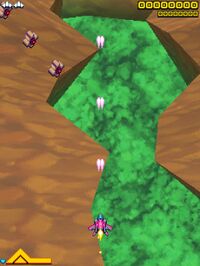
|

|

|

|
| Inverse Color | Sharpen | Bloom | Cartoon |

|

|

|

|
- → Game setting

|

|

|

|
Q. Enable Action bar

– Enable display of screenshot button, side menu
Q. Resolution

A. Set the resolution of the loaded game. Select in the game settings and also specify any resolution, specify any for 3D and touch games, since they often have auto-scale, supports 4k.
Q. Background

A. Choosing a background color under the main game.
Q. Scale
A. Image scale from the specified resolution.
Q. Screen gravity

Q. Screen orientation

A. Changes screen orientation: Landscape, Portrait, Auto
Q. Filter
A. This function increases the quality of the game, but may also decrease the performance.
Q. Graphic mode
A. Selecting the render
mode The graphics mode only affects the final scaling of the frame and the way it is delivered to the screen

1. Software - Used by CPU to output 2D and 3D graphics
2. Hardware OpenGL ES - The mode uses OpenGL ES 2.0 directly - this can be more profitable if the device does not supports newer versions
3. Hardware window - Outputs a frame in a way that is used for buttons, lists, progress bars and other UI
4. Hardware Surface - Available since Android 6.0+ uses the interface that is usually used for video output
Q. FPS limit
A. When game running fast, it allows you to reduce fps for a comfortable game, for example: Rayman 3 128x128.
Q. Touch input

A. Used in games with touch controls, Ex. 640x360 / 800x480 resolution games.
You can also disable the button overlay, as they are not needed
Q. Save / Load state supported?
A. No, because It's impossible, J2ME Loader doesn't emulate hardware, so it can't save the CPU/RAM state.
- → Button Colors
| Original | Labels | Buttons |

|

|

|
| Outline | Labels (P) | Buttons (P) |

|
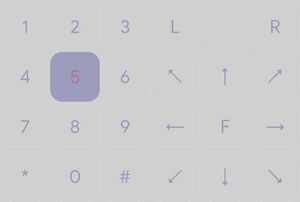
|

|
- → Font option (Small — Medium — Large)[N 2]
Here you can set the sizes of small, medium and large fonts that will be used by the Games. Dimensions are in pixels.
If the Scaled Pixel Sizes check box is selected , the specified dimensions will be adjusted by Android to provide the same visible text size on screens with different resolutions. It is recommended to enable this setting when using virtual screen resolutions of more than 240x320 pixels.
The Presets button allows you to quickly set the font sizes that are most suitable for a given virtual screen resolution:
| Resolution | Font |
| 240x320 | 18 — 22 — 26 |
| 176x220 | 15 — 18 — 22 |
| 128x160 | 13 — 15 — 20 |
| 128x128 | 9 — 13 — 15 |
- → Screen option
- Width and Height set the size of the virtual screen that will be available to the games. Many Games are optimized for a specific screen resolution (usually 240x320) and may not display correctly at other resolutions.
- Scale if virtual screen resolution does not match smartphone screen resolution:
enabled - the virtual screen is scaled to fit the smartphone screen off - the virtual screen is located in the center of the smartphone screen without resizing
- Maintain aspect ratio when scaling:
— Enabled - the virtual screen fits into the smartphone screen while maintaining the aspect ratio, possibly occupying only a part of it
— Off - the virtual screen is stretched to fill the entire smartphone screen, possibly with distortion of the displayed graphics
- Screen filtering when scaling improves image quality, but requires more hardware resources
Presets allow you to quickly set the default resolution of the virtual display. The table below shows a list of standard resolutions (for example, HTC Evo 3D, screen resolution 960x540)
| Resolution | Scale | Aspect ratio and
screen orientation |
| 128x128 | 4.21875: 1 | 1: 1 |
| 128x160 | 3.375: 1 | Portrait 3.2: 4 |
| 132x176 | 3.068: 1 | Portrait 3: 4 |
| 176x220 | 2.454: 1 | Portrait 3.2: 4 |
| 240x320 | 1.6875: 1 | Portrait 3: 4 |
| 202x270 | 2: 1 | Portrait 3: 4 |
| 360x270 | 2: 1 | Landscape 4: 3 |
| 405x540 | 1: 1 | Portrait 3: 4 |
| 720x540 | 1: 1 | Landscape 4: 3 |
| 960x540 | 1: 1 | Landscape 16: 9 |
- Options 1 through 5 correspond to standard screen resolutions for mobile phones. They provide the greatest compatibility (most games are optimized for one of these resolutions), but when scaling to the smartphone screen, the graphics quality may decrease slightly.
- Choices 8, 9, and 10 provide the best graphics quality because they are calculated based on the smartphone screen resolution and do not use scaling. However, if the games is not optimized for these resolutions, it may not work correctly or not work at all. In this case, it is recommended to select a lower resolution.
- Options 5 and 6 are intermediate in quality and compatibility. They are calculated based on the resolution of the smartphone screen so that there are exactly four physical pixels for each virtual pixel. This removes distortion when scaling. When using these options, it is recommended that you turn off screen filtering to sharpen the picture.
The Background button allows you to select the background color of the screen. This color will fill the stripes at the edges of the screen if it is not completely occupied by the virtual screen.
- → Recommended Devices
| Resolution | Devices |
| 960x540 | * HTC Evo 3D |
| 480x800 | * Samsung GT-S8000 / Galaxy S II / Omnia Pro * Sony Ericsson X1i * HTC HD2 / Leo |
| 480x360 | * BlackBerry 9360 / 9700 / 9020 / 9780 |
| 640x480 | * Nokia E6-00 |
| 360x640 / 640x360 | * Nokia 5800 Xpress Music / 5530 Xpress Music / N8 / C7 * Sony Ericsson SATIO / U5i Vivaz |
| 320x480 | * Samsung GT-S5292 / GT-S5296 / GT-S5380K / S7250 * Sony Ericsson Xperia X8 |
| 320x240 | * Nokia E71 / E72 / C3-00 / Asha 201 * BlackBerry 8520 / 9220 / 9220 Curve/ 9300 * Samsung GT-S3350 / GT-S3353 / SGH-i617 |
| 352x416 | * Nokia N80 |
| 240x432 | * Sony Ericsson Aino |
| 240x400 | * Samsung GT-5230 / GT-S5230 * Nokia Asha 305 / 306 / 308 / 311 * LG KU990 / GS290 / GS205 / KP500 / GT505 / GT400 |
| 240x320 | * Sony Ericsson K800i / K660 / W595a / Z750i / W595 / W910i * Nokia 6280 / 6300 / 5300 / 5310XM / N73 / N95 / N85 / X3-02 / X2-00 / X2-05 / X2-02 / 5000d / C2-03 / 2700 Classic / C2-01 / 220 / 216 / 215 / 222 / 225 / Asha 303 / 503 / 500DS / 202 / 300 * Samsung SGH-F480 / GT-S5222 / SGH-D900 / E900 / F400 / U600 / D600 / GT-C3312R / GT-C3310 * LG KS360 * Motorola RAZR V8 / ROKR Z6 / E2 / E1000 / E398 / V500 / V635 * Panasonic VS3 / MX7 |
| 208x208 | * Nokia 6230i |
| 176x220 | * LG U8360 / GU230 / GU280 / GB230 / GB280 / A133 / GM205 * Sony Ericsson W810i * Samsung SGH-L700 |
| 176x208 | * Nokia N91 / N70 / 7610 / 3250 / 6630 / 6681 |
| 176x204 | * Motorola RAZR V3 / L7 / KRZR K1 |
| 176x205 | * Samsung Z300 / Z500 |
| 128x160 | * Nokia 5200 / 2300 / 2720 / 3110x / 3110 Classic / 6101 / C1-01 / Asha 110 / 2600 Classic / 2630 * Motorola L6 * Samsung SGH-E250i / J700 / E215L / E258 / F250L / GT-B2100 / C3050 / E2210 / E2210L / E2510 / M2310 * Sony Ericsson W200i |
| 128x128 | * Nokia 6030 / 3220 * Samsung GT-E2121 / E2120 |
- → Theme / UI
| Dark | White |

|

|
- → FPS
| FPS |
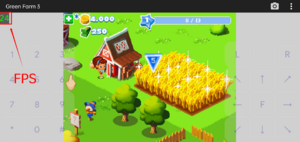
|
– Shows the number of frames per second
- → Force full-screen
| Normal | Force Fullscreen |
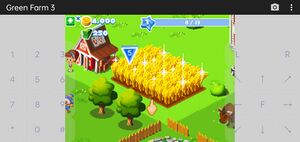
|

|
– Vibrates the forced full screen for the application
- → Button Shape
- Rounded Rectangle
| L1 | L2 | L3 | L4 |

|

|

|

|
- Oval
| L1 | L2 | L3 | L4 |

|

|

|

|
- Rectangle
| L1 | L2 | L3 | L4 |

|

|

|
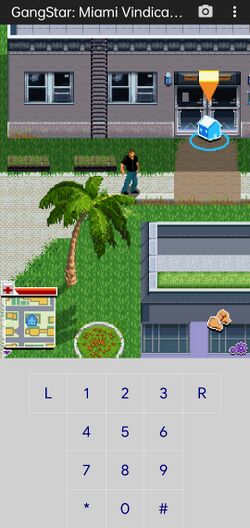
|
- → Keyboard Type
- Rounded Rectangle
| L1 | L2 |

|

|
- Oval
| L1 | L2 |

|

|
- Rectangle
| L1 | L2 |

|

|
- → Scale Type
| As is | Fit to window | Fill window (ignore aspect ratio) |

|

|

|
APIs[edit]
- → Mascot Capsule V3 support
implementation is not accurate, there are unresolved problems.
In some games (seen in "Medal of Honor") the 3D scene may not be displayed due to the overlap with the 2D background. Try adding the following line to the "System Properties" field: micro3d.v3.render.no-mix2D3D: true
Another one property turns on the texture filter (built into OpenGL), but this can generate distortion in the form of extra texels being captured at the edges of polygons: micro3d.v3.texture.filter: true without this setting, the quality of the textures is as close to the original as possible and looks more vintage.
Known issue[edit]
- → Tips
- Enabling filtering in some cases can greatly reduce performance. Disable this option if game is too slow.
- Image flickering issues can be fixed by enabling the
Immediate processing modeoption.
How to use[edit]
- → Installation
Download a latest version of J2ME Loader on your Android device.
| Automatic Builds | |
| GitHubF-Droid | |
| Play Store |
Next,
Click 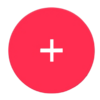 (button) at the lower right corner in the main J2ME-Loader Windows and select the
(button) at the lower right corner in the main J2ME-Loader Windows and select the .JAR or .KJX program on your file manager, after setup your game configures.
- → BT Installation
- Requirements :
Bluetooth API implemented and use key mapping
- 2 Android Devices
- BT Controller
Download (Apps)[edit]
J2ME
| Site(s) | Rating |
| dedomil.net | ★★★★★ |
| phoneky.com | ★★★★ |
| RuGame Archive | ★★★★ |
| seclub.org | ★★★ |
| oldfag.top | ★★★ |
| series40.kiev.ua | ★★★ |
| sleza-mobile.ru | ★★★ |
| dertz.in | ★★★ |
| oldhandhelds.com | ★★★ |
| spaces.im | ★★★ |
| mobile24.co | ★★★ |
| se.tom.ru | ★★★ |
| 240x320m.ar.ua | ★★★ |
| siemensx70.narod.ru (siemens only) | ★★★ |
→ Also recommends Archive.org J2ME collection Cellphone games preservation
EZplus アプリ

Japanese carrier KDDI/Au released ezplus as part of their EZweb set of standards for mobile telephony. It is based on Java ME extended with propietary APIs. The first device supporting it was released on 2001 (Hitachi C451H).
Applications were denominated "EZplusアプリ" (during the ezplus name era) and come in the form of .KJX files.
| Package |
|---|
| .KJX Games Collection |
Mascot Capsule Ver.3

Mascot Capsule is a proprietary 3D engine developed by Hi Corporation (Japan), written in C and compiled for all platforms known at the time. It was mostly used in Japanese devices such as i-mode, J-PHONE, EZweb, and others, but it also made it overseas featured in many Sony Ericsson and Motorola devices. Many developers made use of this tech to bring higher quality 3D graphics on the Sony Ericsson version of their J2ME games.
| Package |
|---|
| Mascot Capsule 3D games collection |
Key binding / mapping[edit]
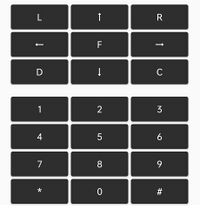
Keys : Default
| Key | Action |
| D-PAD Up | ↑
|
| D-PAD Down | ↓
|
| D-PAD Left | ←
|
| D-PAD Right | →
|
| D-PAD Center | F
|
| D-PAD Left-Up | ↖
|
| D-PAD Right-Up | ↗
|
| D-PAD Left-Down | ↙
|
| D-PAD Right-Down | ↘
|
| LEFT-Soft Key | L
|
| RIGHT-Soft Key | R
|
| NUM1 | 1
|
| NUM2 | 2
|
| NUM3 | 3
|
| NUM4 | 4
|
| NUM5 | 5
|
| NUM6 | 6
|
| NUM7 | 7
|
| NUM8 | 8
|
| NUM9 | 9
|
| NUM0 | 0
|
| * | *
|
| # | #
|
References[edit]
- ↑ Strictly speaking, it is not exactly an emulator. It converts MIDlets to Android API and makes J2ME applications to run almost natively in Dalvik or Android Runtime
- ↑ FAQ